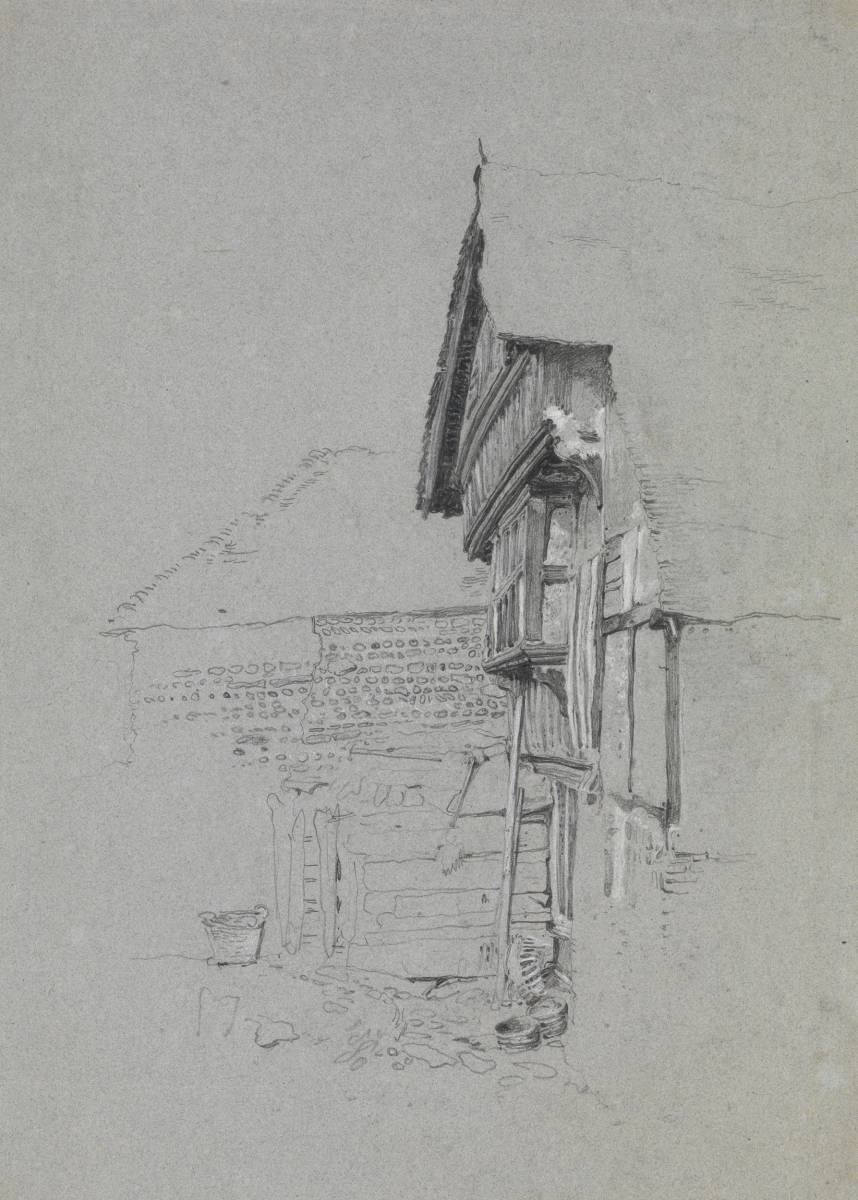This beautiful, freshly worked chalk drawing is a rare plein air study made by William Mulready at the beginning of his career. Made when Mulready was working with John Linnell, this study first belonged to Linnell.
The subjects of Mulready's earliest years are chiefly landscapes and picturesque cottage subjects including views of Hampstead Heath, Middlesex, depictions of gravel pits, and cottages in or near St Albans which, while owing much to John Crome, share with Linnell's work of this period a plein-air freshness of vision. This striking sheet shows Mulready heavily working up one section of the composition, in this case the obliquely viewed gable-end of the half-timbered house, leaving the rest of the structures merely sketched in with single lines of black chalk. Mulready regularly drew with Linnell and his brothers' in law, John and Cornelius Varley and each experimented with drawing instruments, such as camera lucida. Cornelius Varley would pioneer is own device to aid the draughtsman, his patent Graphic Telescope. The suggestive way details have been outlined but not fully realised suggest that this sheet was made with the use of a camera lucida. Mulready's drawings are rare and this sheet offers a fascinating insight into the intersection of science and art.


